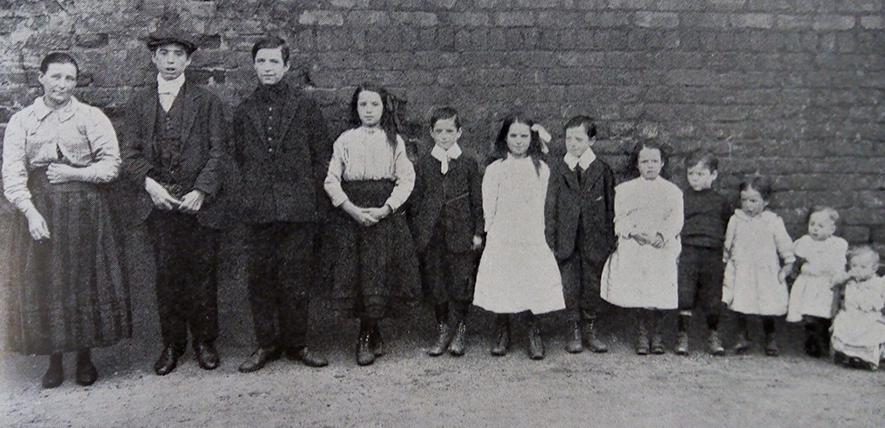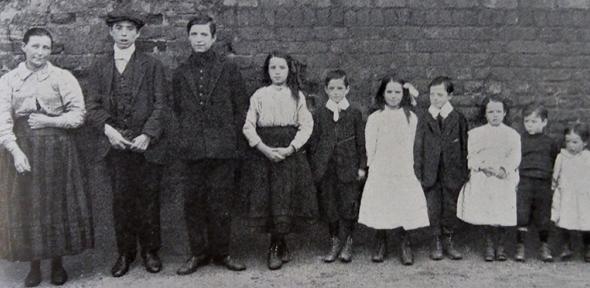
Sex before marriage was unusual in the past – Myth! In some periods, over half of all brides were already pregnant when they got married.
The rich have always outlived the poor –Myth! Before the 20th century the evidence for a survival advantage of wealth is mixed. In England, babies of agricultural labourers (the poorest workers) had a better chance of reaching their first birthday than infants in wealthy families, and life expectancy was no higher for aristocrats than for the rest of the population. These patterns contrast strongly with national and international patterns today, where wealth confers a clear survival advantage everywhere and at all ages.
In the past people (particularly women) married in their teens – Myth! In reality, women married in their mid-20s, men around 2.5 years older. Apart from a few decades in the early 1800s, the only time since 1550 that the average age of first marriage for women fell below 24 was during the baby boom of the 1950s and 1960s.
These are just some of the stubborn myths busted by researchers from The Cambridge Group for the History of Population and Social Structure (Campop). Their Top of the CamPops blog (www.campop.geog.cam.ac.uk/blog) goes live on 11th July 2024 with new posts being added every week. The blog will reveal ‘60 things you didn’t know about family, marriage, work, and death since the middle ages’.
The initiative marks the influential research group’s 60th anniversary. Founded in 1964 by Peter Laslett and Tony Wrigley to conduct data-driven research into family and demographic history, Campop has contributed to hundreds of research articles and books, and made the history of England’s population the best understood in the world.
Earlier this year, the group made headlines when Professor Leigh Shaw-Taylor revealed that the Industrial Revolution in Britain started 100 years earlier than traditionally assumed.
Professor Alice Reid, Director of Campop and a Fellow of Churchill College, Cambridge, said: “Assumptions about lives, families and work in the past continue to influence attitudes today. But many of these are myths. Over the last 60 years, our researchers have gone through huge amounts of data to set the record straight. This blog shares some of our most surprising and important discoveries for a broad audience.”
Myth: Until the 20th century, few people lived beyond the age of 40. Reality: Actually, people who survived the first year or two of life had a reasonable chance of living until 70.
Myth: Childbirth was really dangerous for women in the past, and carried a high chance of death. Reality: The risk of death during or following childbirth was certainly higher than it is now, but was far lower than many people suppose.
Myth: Families in the past generally lived in extended, multigenerational households. Reality: Young couples generally formed a new household on marriage, reducing the prevalence of multi-generational households. As today, the living circumstances of old people varied. Many continued to live as couples or on their own, some lived with their children, whilst very few lived in institutions.
Myth: Marital titles for women arose from men’s desire to distinguish available women from those who were already ‘owned’. Reality: Both ‘miss’ and ‘mrs’ are shortened forms of ‘mistress’, which was a status designation indicating a gentlewoman or employer. Mrs had no necessary connection to marriage until c.1900 (and even then, there was an exception for upper servants).
Myth: Famine and starvation were common in the past. Reality: Not in England! Here, the poor laws and a ‘low pressure’ demographic system provided a safety net. This helps to explain why hunger and famine are absent from English fairy tales but common in the folklore of most European societies.
Myth: Women working (outside the home) is a late 20th century phenomenon. Reality: Most women in the past engaged in gainful employment, both before and after marriage
Myth: Women take their husbands’ surnames because of patriarchal norms. Reality: The practice of taking a husband’s surname developed in England from the peculiarly restrictive rule of ‘coverture’ in marital property. Elsewhere in Europe, where the husband managed the wife’s property but did not own it, women retained their birth names until c.1900.
Myth: People rarely moved far from their place of birth in the past. Reality: Migration was actually quite common – a village population could change more than half its members from one decade to the next. Rural to urban migration enabled the growth of cities, and since people migrated almost exclusively to find work, the sex ratio of cities can indicate what kind of work was available.
Campop’s Professor Amy Erickson said: “People, not least politicians, often refer to history to nudge us to do something, or stop doing something. Not all of this history is accurate, and repeating myths about sex, marriage, family and work can be quite harmful. They can put unfair pressure on people, create guilt and raise false expectations, while also misrepresenting the lives of our ancestors.”
“The University of Cambridge is a public collegiate research university in Cambridge, England. Founded in 1209, the University of Cambridge is the third-oldest university in continuous operation.”
Please visit the firm link to site






